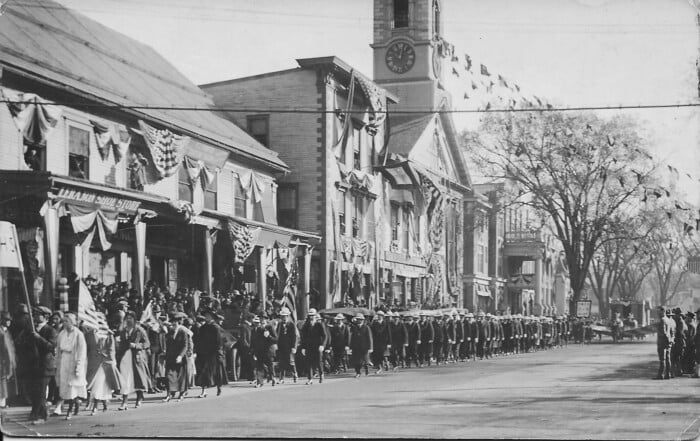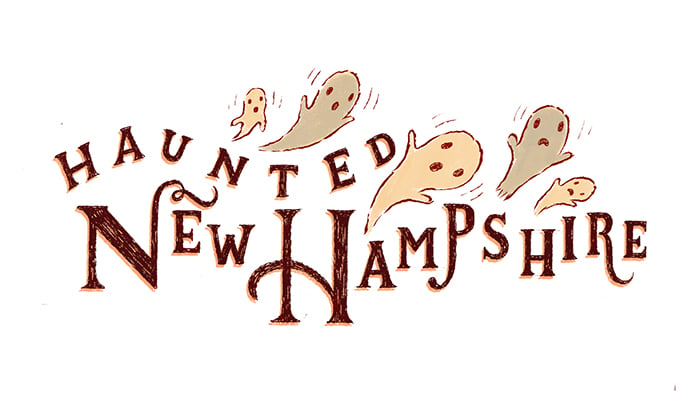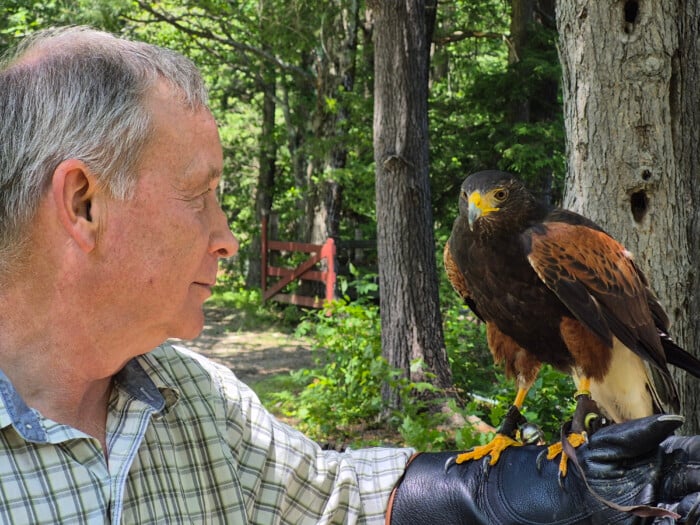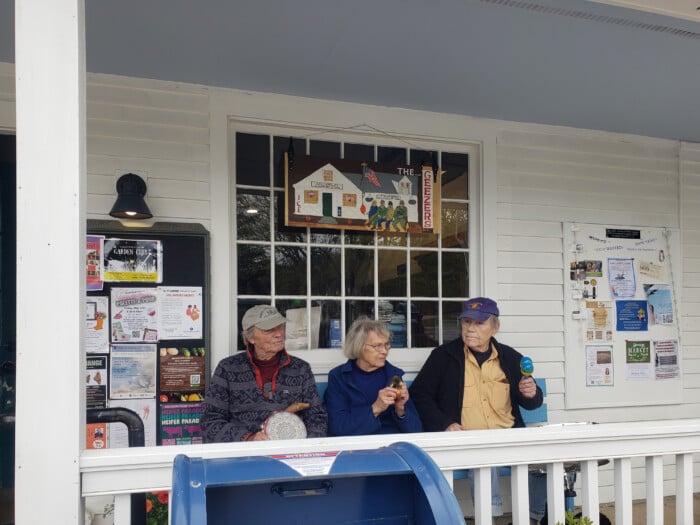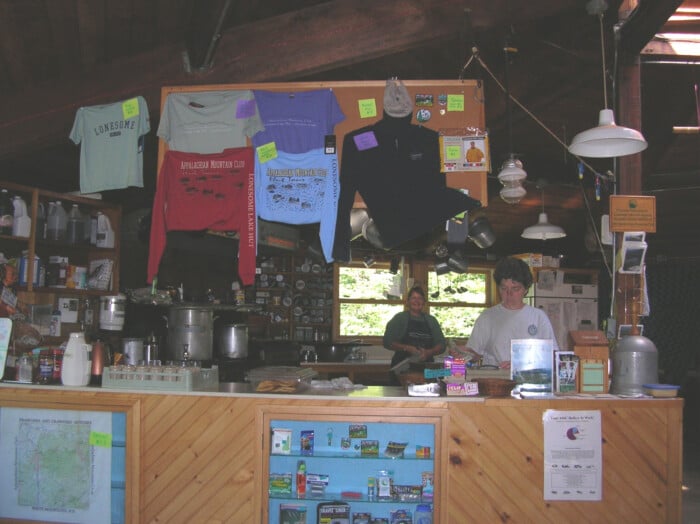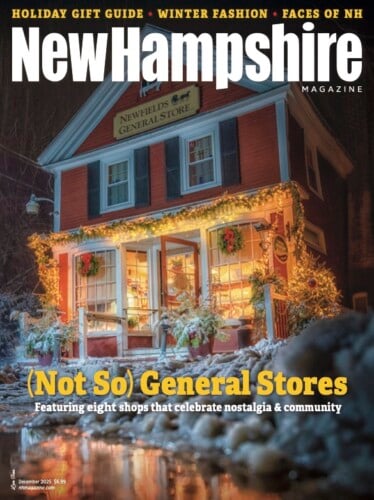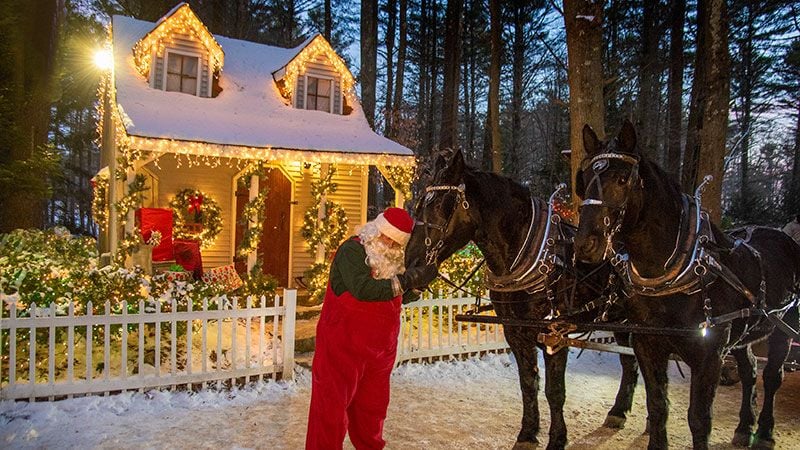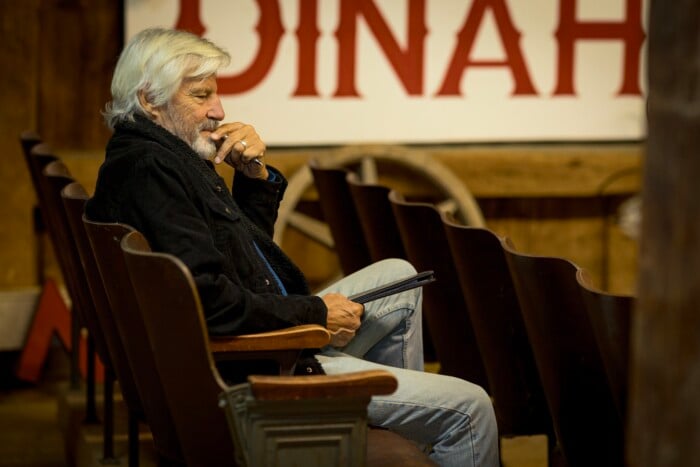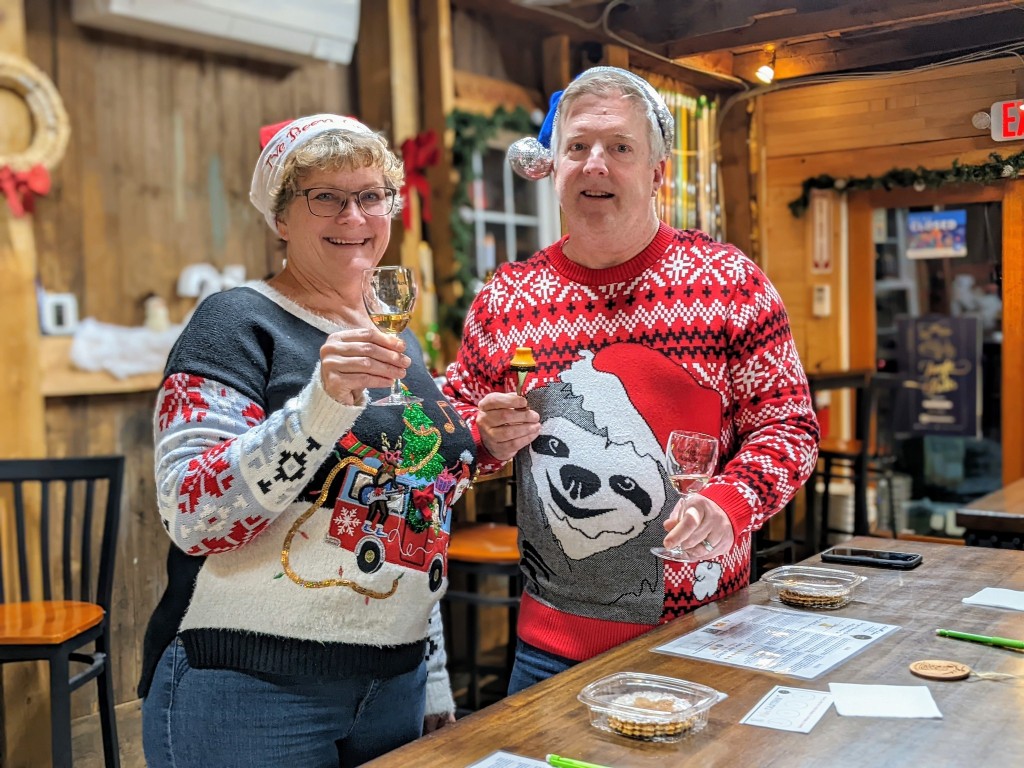Mowing Grasshoppers at Houghton’s Folly
A Sept. 18, 1915, article in the Littleton Courier leapt out at me:
“Joseph Saladino, who operates what is known as the Houghton stock farm at Orford, New Hampshire, has had an experience with grasshoppers this season. The farm has 150 acres of tillage land, with a fine meadow reaching to the Connecticut River.
From that meadow Mr. Saladino has cut but one load of hay this season. Grasshoppers got the rest. The pests also damaged the oat crop to such an extent that he did not bother to thresh it. By an act of the New Hampshire Legislature, a bounty of one dollar per bushel is being paid on grasshoppers.
Instead of mowing hay, Mr. Saladino mowed for grasshoppers and received twice as much money as the value of the hay he would have harvested. He attached sacks to his rakes and caught the hoppers by driving over the fields in the customary ways. He received a bounty of $65.”
Grasshoppers and a shortage of hay were not the only bad luck Saladino would have at the former S.S. Houghton farm. Five years later, another newspaper clipping reported:
“Last Wednesday forenoon the clock tower and over 100 feet of the upper part of the south wing of the big barn owned by Joseph Saladino, collapsed and fell over into the barnyard. Mr. Saladino had just stabled his pony in this part of the building and, while the stalls on either side of it were demolished, the pony escaped without a scratch.”
Accompanying photos show a massive barn with a very tall clock tower collapsed into an expensive-looking mess to be dealt with.
I’m in Orford reading a stack of old newspaper clippings which, compiled, tell the story of S.S. Houghton and his dream of owning a fine horse farm to be named “Pavilion Stock Farm.” Newspapers referred to it as “Houghton’s Folly” or “the big barn folly,” and describe it as “a rich man’s fancy of little practical value.”
The mammoth barn was erected for stabling fine trotting horses to be used for breeding. Houghton also built a second farm called “Villa Farm” on the other side of Orford where he planned to keep his cattle, as his wife’s sensibilities were offended by the pungent aroma of cows at Pavilion Stock Farm.
The Pavilion barn was built in 1877 and was one of the largest stock barns in the country. It measured 240 feet across the front and was 54 feet wide, with an attached 60-by-200-foot-long ell. The barn enclosed a half-acre, and it was a story and a half tall with a full basement beneath.
The clock tower reached 168 feet above the ground and housed a bell that could be heard on Main Street. The first floor contained box stalls and stanchions for the stock. The second floor could be reached by an inclined plane and was used for the storage of hay and grain. On the first floor, there was a large office finished in ash and black walnut. A steam apparatus in the basement provided heat and hot water. Near the barn was a racetrack for exercising the horses, and the barn featured an elaborate viewing room, called the grandstand, which overlooked the entire track. Records indicate that S.S. Houghton had as many as 80 to 125 horses stabled in this barn, along with sheep, hogs and the pungent cows.
Samuel Storm Houghton was born in Fairlee Vermont about 1828 and grew up to be an innovator in retail and agriculture. Houghton began his retail career at the age of 14, when he went to Boston to work in his brother’s dry goods store. In 1846, he married Mary Converse of Lyme and in 1858, they went to New York City where S.S. formed a partnership with his brother-in-law R.H. Macy.

After years of postponed or neglected maintenance, the clocktower on the big barn suddenly collapsed in September of 1920.
By 1874, Houghton had moved to the Boston area and established a department store in the heart of the city. A lover of horses, Houghton began raising driving horses at his Melrose, Mass., residence. S.S. and Mary returned to their Upper Valley childhood roots in 1872 to begin planning and building their dream country home, where they could keep a few horses.
The famed “big barn” was finished in 1877, and an advertisement indicates that Pavilion Wilkes, George Wilkes, Patchen Knox and other proven stallions were standing ready to service broodmares for only $25, plus $2 a day for hay and grain. Any mare not proving to be with foal would be serviced again for free the following season.
Houghton’s dream of operating a successful stock breeding farm does not seem to have been overly successful — only six years later he announced in a publicity flier that he was auctioning off his equipment and stock, and offering both the Pavilion Farm and Villa Farm for sale.
The Pavilion Stock Farm changed hands a few times before Joseph Saladino took ownership in 1907. The big barn had been neglected by prior owners, perhaps overwhelmed by the high maintenance costs of such a large building.
Saladino raised prize-winning Ayrshire cattle, but by the early 1920s had apparently fallen on hard times. In 1921, Saladino had a large part of the barn and a portion of the house torn down by a wrecking company and the lumber shipped to market, probably in an effort to generate some income from the property.
Bad luck continued to plague Saladino, as deeds indicate that the town of Orford seized the property in 1926 for non-payment of property taxes.
In July of 1930, a fire destroyed the remaining portion of the legendary big barn. About a year and a half later, the house burned to the ground leaving two cellar holes connected by a brick-walled underground passageway. S.S. Houghton’s dreams of a very fine horse-breeding farm had lasted less than 10 years. The elaborate big barn of Pavilion Stock Farm had survived only about 50 years.
Perhaps the old newspapers were correct after all in calling it “a rich man’s fancy” or labeling it, “Houghton’s Folly” … but I’m left wondering what the New Hampshire Legislature did with 65 bushels of grasshoppers.


